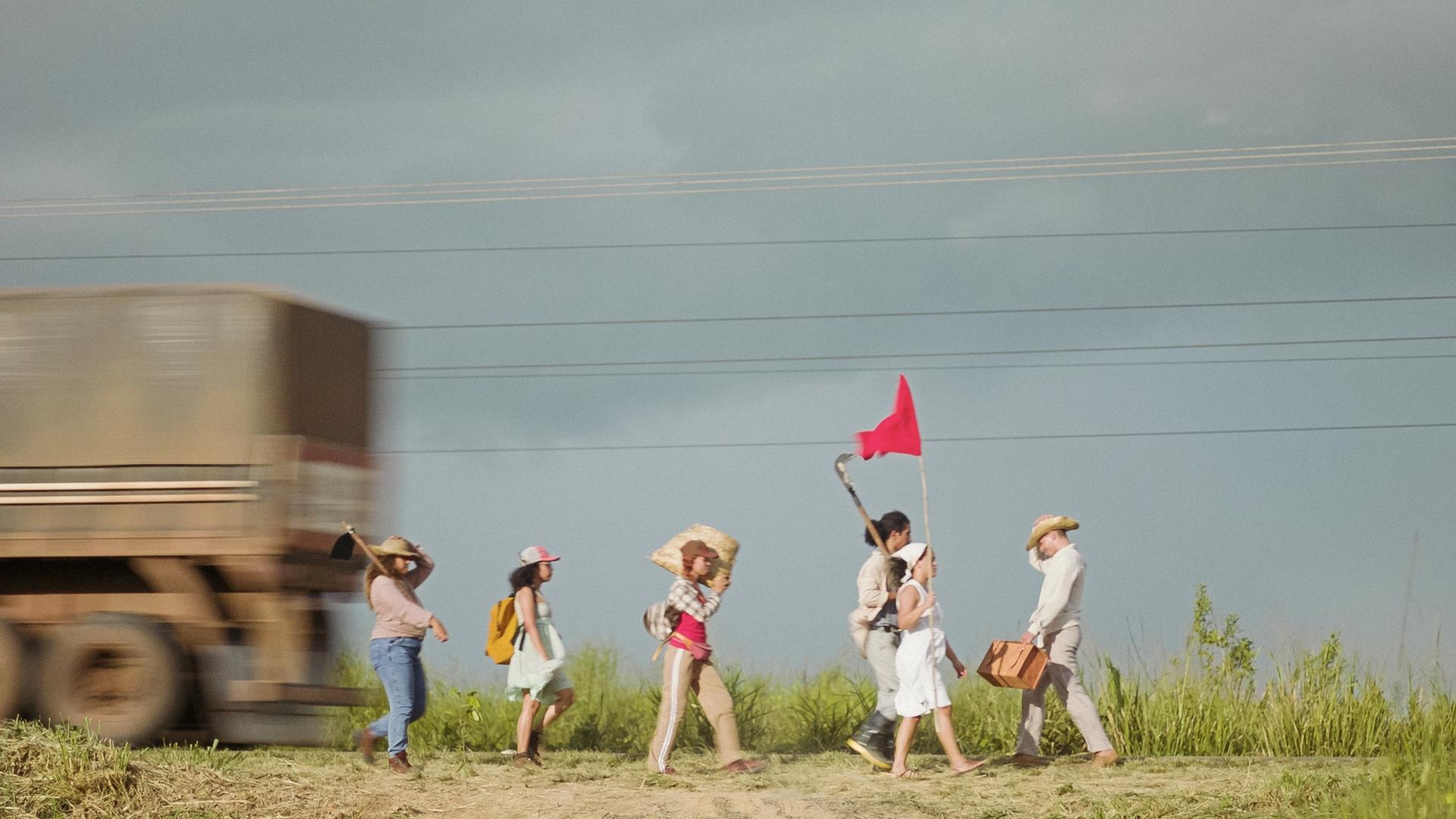The politics of gesture pervade the five films in Brazilian artists Bárbara Wagner and Benjamin de Burca’s mini survey, Five Times Brazil, at the New Museum (until 16 October). Whether an evangelical singer filling the Zona da Mata hills with echoes of her earth-shattering voice or dancers joyously swinging to the rhythms of frevo music, bodily acts capture the rituals and ideologies of the subjects’ communities.
The sleekly-shot films follow people from all walks of life—particularly in Northern Brazil—engaging with the audience through different forms of performance. The artists seek “a semblance of reality”, de Burca says, when casting people who are engaged with dance, theatre or music in their daily lives. “We portray them during their own making within a certain place and time in Brazil,” Wagner adds. “What they’re doing is a form of labour that is transitioning and ‘becoming’ in front of our camera.”

Bárbara Wagner & Benjamin de Burca, Swinguerra (2019 (still). © Bárbara Wagner & Benjamin de Burca. Courtesy Fortes D’Aloia & Gabriel, São Paulo/Rio de Janeiro.
A group of swingueira dancers deliver erratic choreographies in Swinguerra (2019), which the artist duo created for the same year’s Brazilian Pavilion at the Venice Biennale. The two-channel installation’s portmanteau title combines the dance category with the Portuguese word for war, guerra, alluding to the predominantly queer dancers’ militant energy and ardor, as well as the fragility of power dynamics in dance contests held in the city of Recife.
The 21-minute film’s delirious booms give way to a pensive quiet in the adjacent room, where another piece shows members of Coletivo Banzeiros—a group of amateur actors who are members of the Landless Workers' Movement—staging a play in the Amazon forest about the massacre of 19 of their members by the military police in 1996. Making its debut in Wagner and de Burca’s first solo museum show in the US, Fala da Terra (2022) recounts the brutal consequence of the workers’ protests against the aggressive extractionism, mining and deforestation on their land.

Bárbara Wagner and Benjamin de Burca, Fala da Terra (Voice of the Land), (2022). Courtesy the artists and Fortes D’Aloia & Gabriel, S.o Paulo/Rio de Janeiro.
“There is not a single word that we created,” Wagner says of their involvement with the performers. In the film, a mise en abyme structure layers the gaze of those in the museum’s dark room and the audience watching the play in the forest. The real-life survivors of the massacre, they mirror the play’s dire text with solemn expressions against the lush green backdrop.
The curators Margot Norton and Bernardo Mosqueira have selected films from the duo’s last seven years, since they began collaborating with the cinematographer Pedro Sotero. While his cinematic veneer nods to narrative filmmaking, traditional climaxes or protagonists are absent. Instead, the artists foreground gestures embedded with symbolism and beliefs.
“All of our subjects already have their own audience,” Wagner says. “The presence of a large camera and film equipments, however, add another layer to our encounter.”

Bárbara Wagner & Benjamin de Burca, Terremoto Santo / Holy Tremor (2017) (still). © Bárbara Wagner & Benjamin de Burca. Courtesy Fortes D’Aloia & Gabriel, São Paulo/Rio de Janeiro.
A pentecostal evangelical singer serenades about faith while surrounded by nature in Terremoto Santo, building her reverberating voice and devotional lyrics up to a crescendo. An earthquake follows, the camera moves giving the illusion of a massive tremor that makes the rock she stands on and the lake behind quiver.
“We work with people whose bodies are heavily connected to a ritualistic experience and the community,” Wagner says. “Through music or dance, their experience is associated to embodying joy as a form of resistance.”
- Bárbara Wagner and Benjamin de Burca: Five Times Brazil, until 16 October, New Museum, New York.


